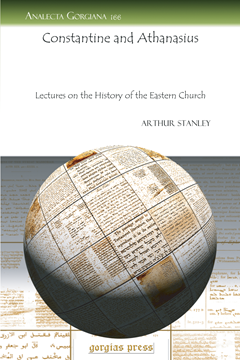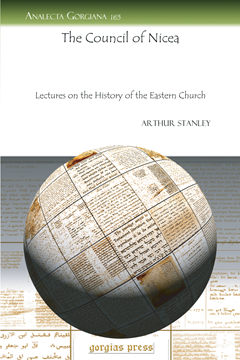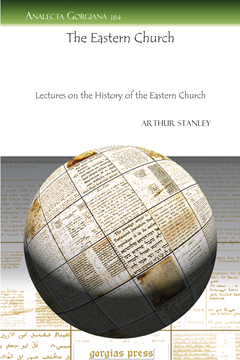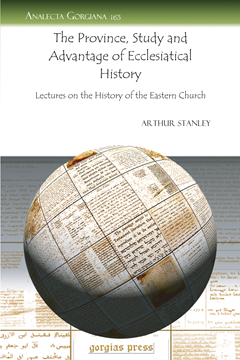Arthur Stanley
The Russian Church
Lectures on the History of the Eastern Church
Series: Analecta Gorgiana 167
ISBN: 978-1-60724-182-9
Extracted from Arthur Penrhyn Stanley’s Lectures on the History of the Eastern Church, this set of lectures covers the Russian Church. Stanley begins with the conversion of Russia and moves through the Middle Ages and concentrates on Patriarch Nicon and the reformations in the church under Peter the Great.
$56.00 (USD) $33.60 (USD)
Constantine and Athanasius
Lectures on the History of the Eastern Church
Series: Analecta Gorgiana 166
ISBN: 978-1-60724-181-2
Extracted from Arthur Penrhyn Stanley’s Lectures on the History of the Eastern Church, this set of lectures examines two of the most famous participants of the Council of Nicea, the Emperor Constantine and Saint Athanasius. Together these two figures largely define the Council of Nicea, and their portraits are vividly portrayed here by an eminent church historian.
$44.00 (USD) $26.40 (USD)
The Council of Nicea
Lectures on the History of the Eastern Church
Series: Analecta Gorgiana 165
ISBN: 978-1-60724-180-5
Extracted from Arthur Penrhyn Stanley’s Lectures on the History of the Eastern Church, this set of lectures focuses on the Council of Nicea. Divided into four separate lectures, it begins with a detailed general overview, the contents and participants of the council, a consideration of its opening and the final results of its closing.
$54.00 (USD) $32.40 (USD)
The Eastern Church
Lectures on the History of the Eastern Church
Series: Analecta Gorgiana 164
ISBN: 978-1-60724-179-9
Extracted from Arthur Penrhyn Stanley’s Lectures on the History of the Eastern Church, this initial essay lays out his general perceptions of the Eastern Church. He considers the divisions of the church, the historical epochs into which it falls, and the general characteristics and the advantage of studying them.
$41.00 (USD) $24.60 (USD)
The Province, Study and Advantage of Ecclesiatical History
Lectures on the History of the Eastern Church
Series: Analecta Gorgiana 163
ISBN: 978-1-60724-178-2
Extracted from Arthur Penrhyn Stanley’s Lectures on the History of the Eastern Church, this introduction to ecclesiastical history is a tribute to the insight of a former professor of ecclesiastical history at Oxford. Stanley’s introduction covers three main areas: the province of ecclesiastical history, the study of ecclesiastical history, and the advantages of such study.
$42.00 (USD) $25.20 (USD)
Lectures on the History of the Eastern Church
ISBN: 1-59333-052-9
Twelve lectures on the branches of the Eastern Church, with an introduction on the province, the methods and the advantages of the study of Church History, by Arthur Stanley, Canon of Canterbury and Regius Prof. of Church History at Oxford (d. 1858).
$131.00 (USD) $78.60 (USD)






